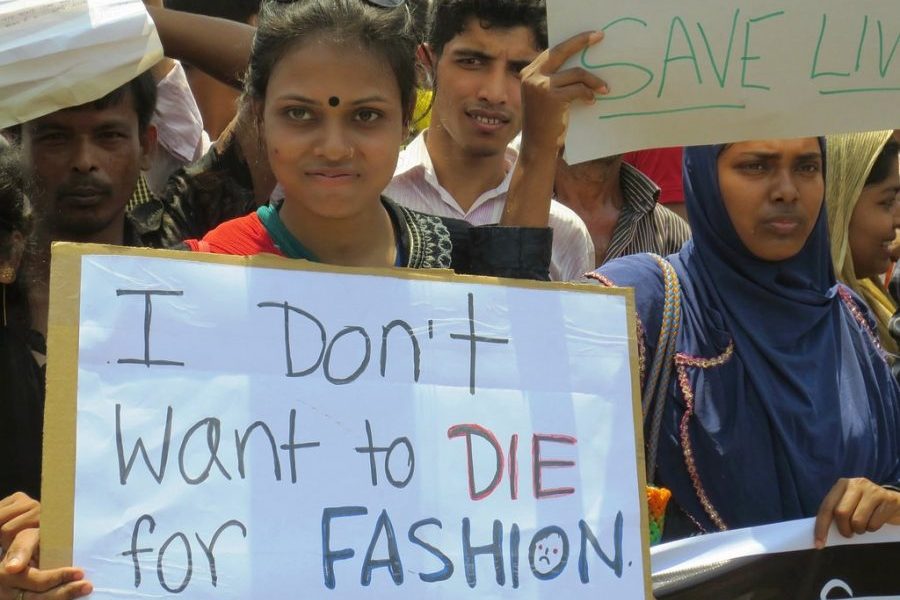Truth About Fast Fashion
The unethical reality of inexpensive and timely clothing brands
Photo credits: Solidarity Center
Many garment workers die making clothes for fast fashion brands
Imagine working 14 hour shifts and taking home less than $5 a day. Imagine spending hours making clothes for people in other countries but not having any clothes for you to wear. These are just some of the many struggles that garment workers face daily due to the fast fashion industry’s unethical production of their products.
Fast Fashion brands such as Forever 21, Zara and Wet Seal use sweatshops and child labor for the production of their products. Although the high demand for fast fashion in the United States is only increasing, the industry’s unethical ways should not be promoted by current trends of the United States.
Most of the sweatshops and factories are located in developing Asian countries such as Bangladesh. According to the Global Labor Rights Organization, the average factory worker works 13-14 hours daily, only taking home around 22 cents per hour.
The companies ignore the safety conditions of their factories, creating a violation of human rights. In 2015, the Rana Plaza factory in Bangladesh collapsed, killing 1,137 people, over a year later and 200 people are still missing in the rubble. The high fatality number made this collapse the deadliest in the history of the fashion industry. The Rana Plaza factory produced clothing for U.S., Canadian, and European clothing lines. The building had severe cracks in the factory walls, yet no safety precautions were taken to prevent this terrible disaster.
People who support fast fashion brands argue that their products are simply inexpensive and stylish. The reality of the low prices is that the cheaper the clothing is, the worst the conditions are for the factories the clothes were made in.
It seems almost unrealistic to have such inexpensive clothing, but fast fashion companies are able to sell their products for such small amounts because of the cheap yet harmful processes they use for production. For example, the leather tanning process that these companies use exposes their workers to highly toxic chemicals, causing premature aging, discoloration, acid-burned skin, and disfigured or amputated limbs, but they use this process because it is significantly cheaper than the natural alternatives.
The conditions that garment workers are forced into are extremely dangerous, but fast fashion companies seem far from changing their harmful tactics. As the death toll of their workers rose, so did the income of the companies. According to LA Times, the year after the Rana Plaza tragedy was the fast fashion industry’s most profitable year yet.
The truth about the cheap and accessible clothing is often covered up by famous models and trend setting clothing. People need to understand where their clothes are coming from and the harmful labor that was put into making the clothing. The fast fashion industry is unethical and must be stopped.
Your donation will support the student journalists of Cypress Woods High School. Your contribution will allow us to purchase equipment and cover our annual website hosting costs.



